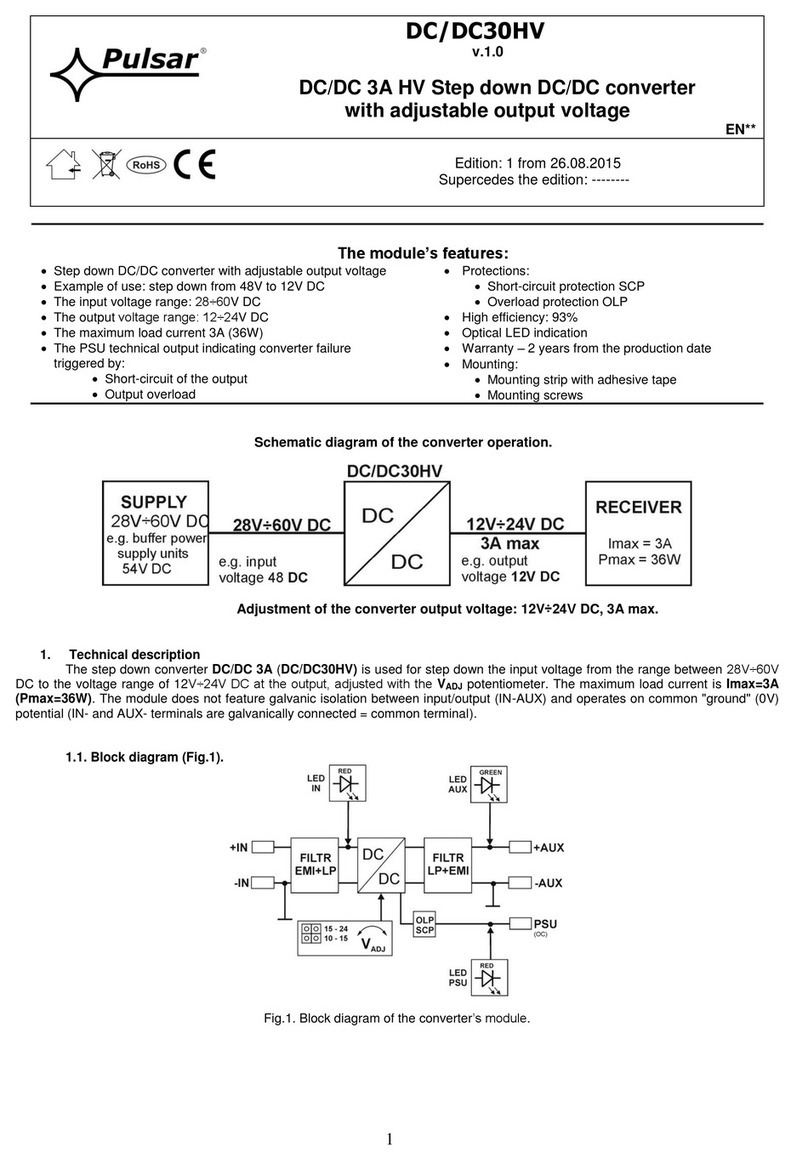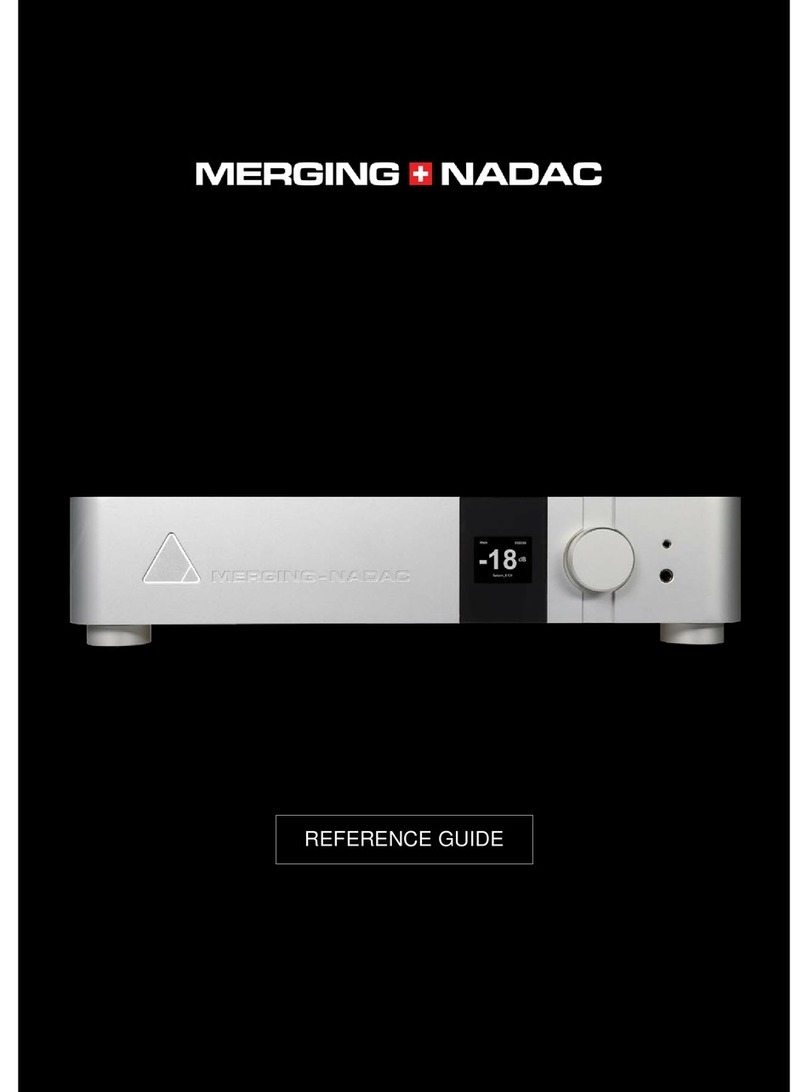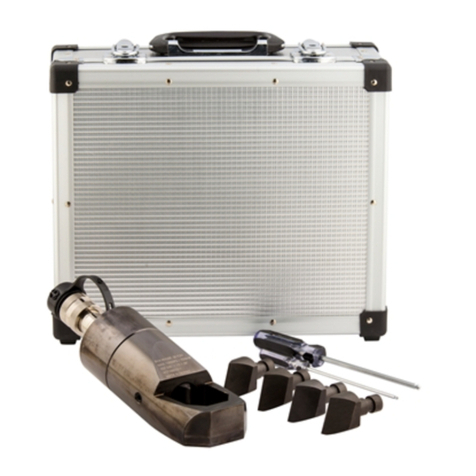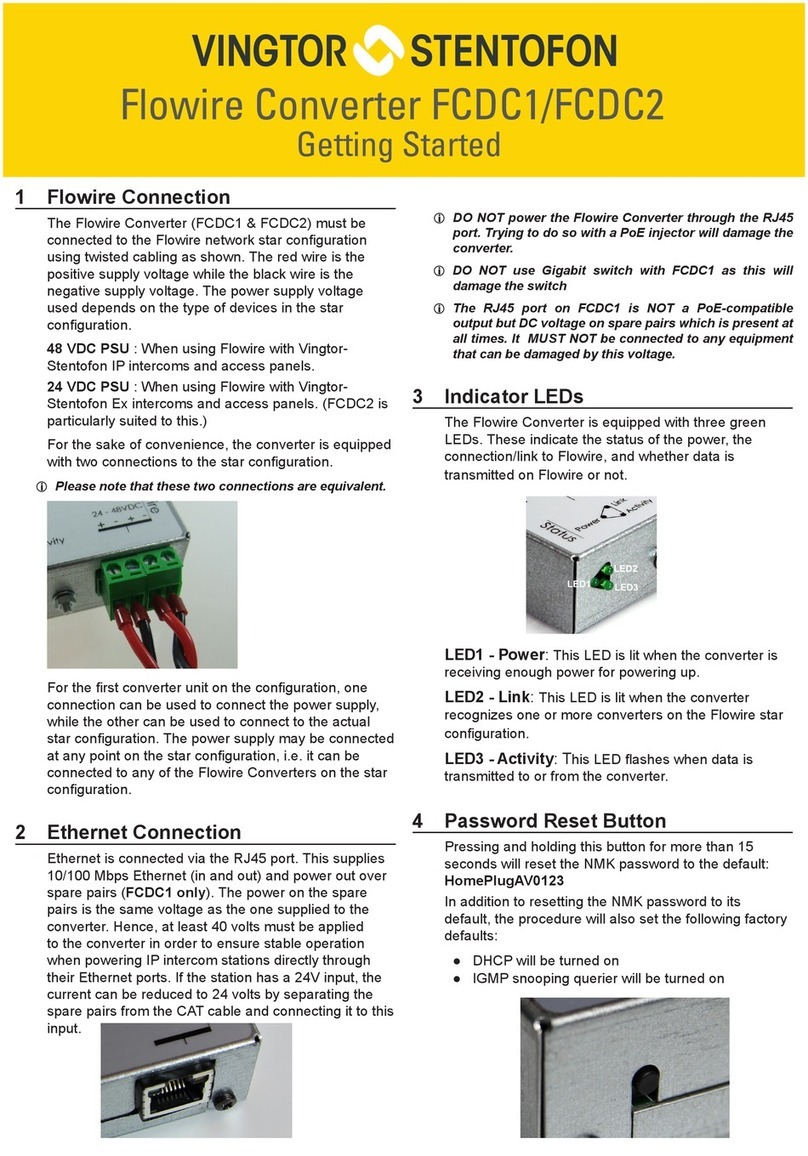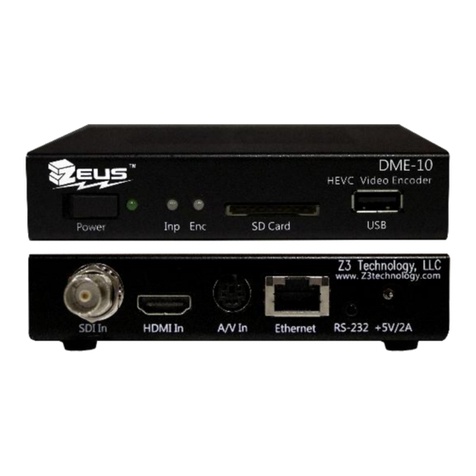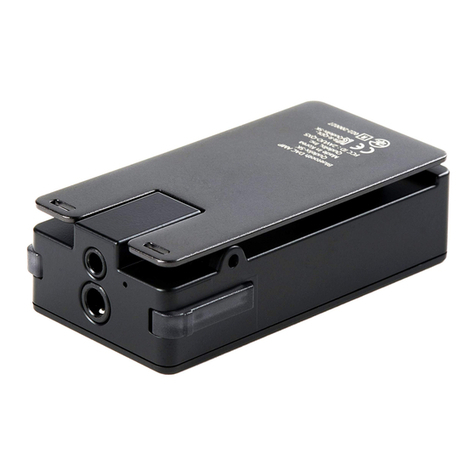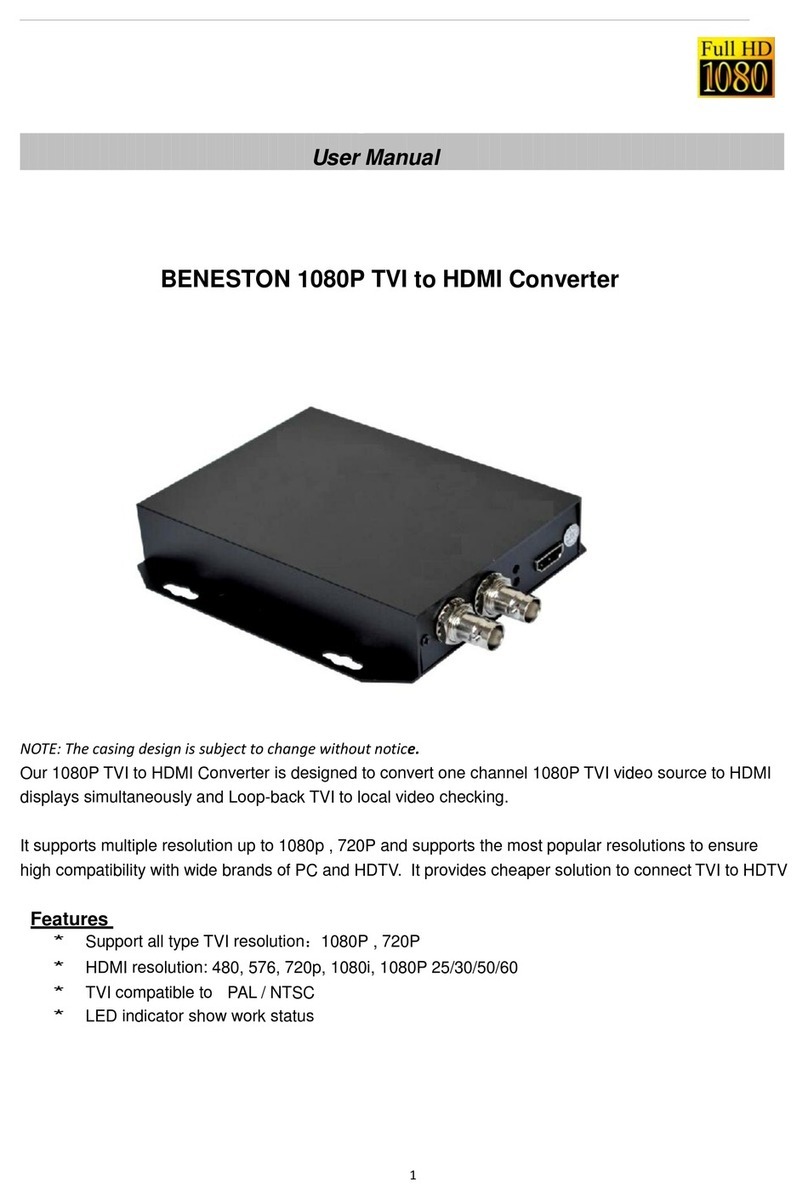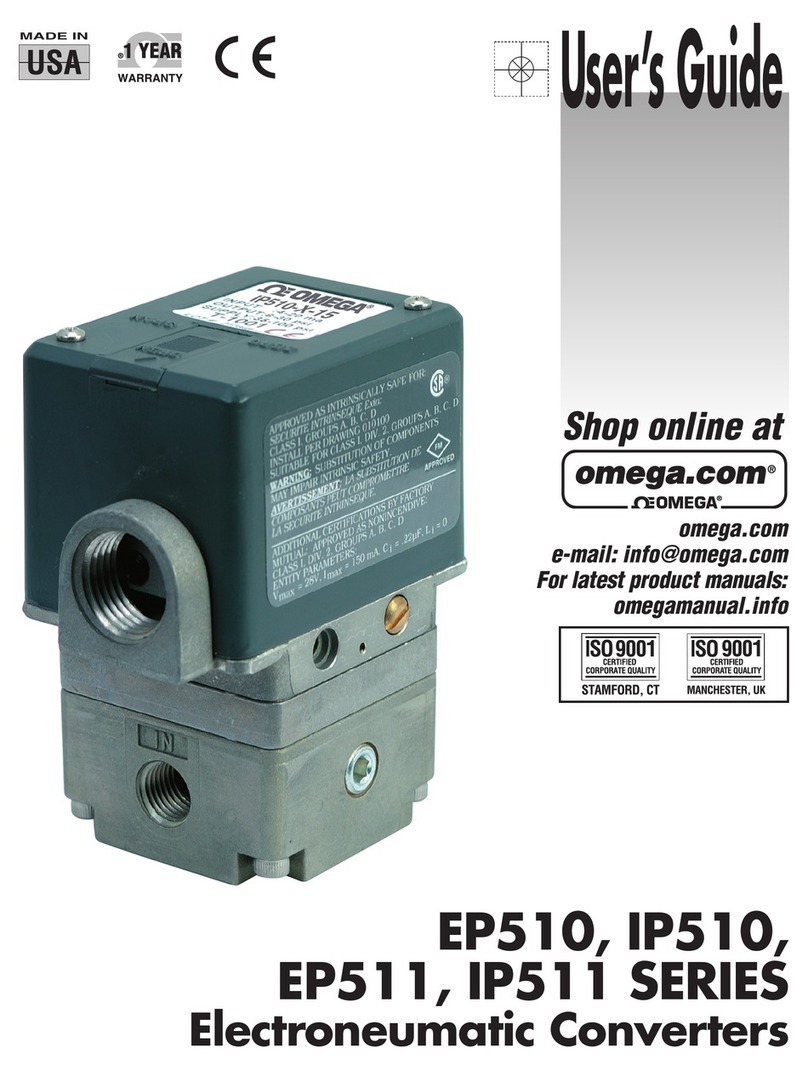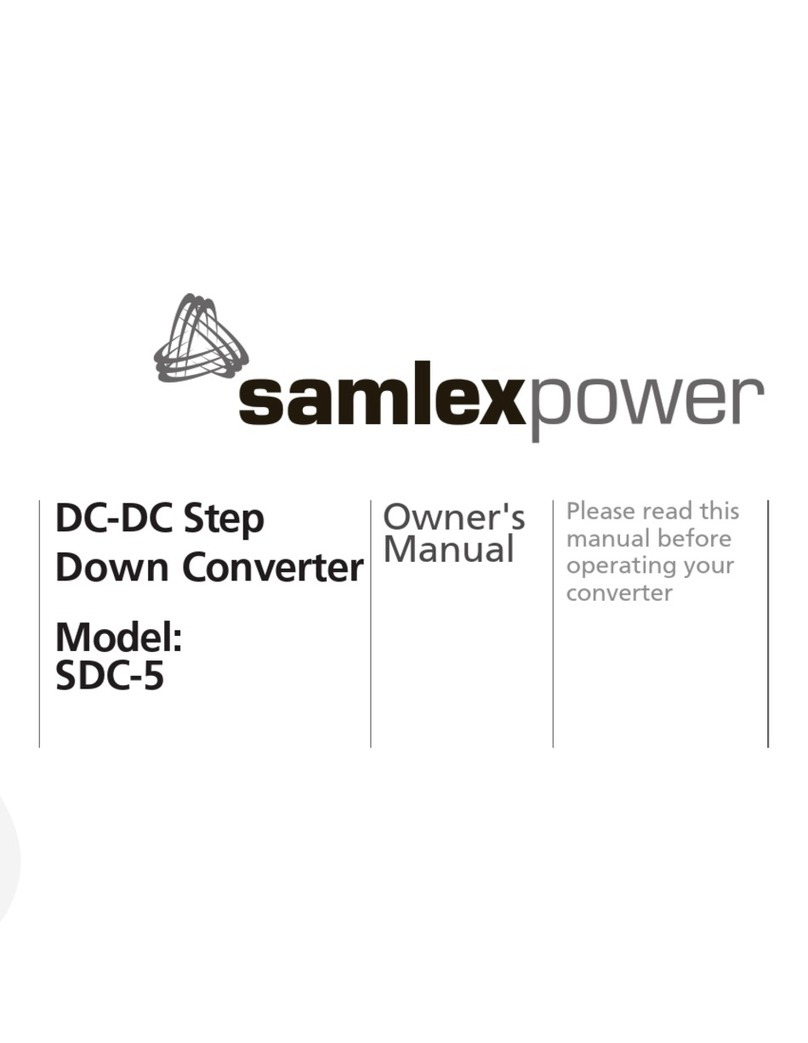BASS POLSKA 5009 User manual

VOLTAGE CONVERTER
5009, 5012, 5013, 5014
User Manual
Translation of the original instructions
BEFORE USE PLEASE READ CAREFULLY

2
WARRANTY AND SERVICE
Table of contents
I. WARRANTY AND SERVICE ................................................................................................... 2
II. SAFETY RULES RELATED TO THE USE OF THE INVERTER..................................................... 4
III. PURPOSE OF THE BASS POLAND INVERTER........................................................................ 7
IV. SPECIFICATIONS .................................................................................................................. 7
V. HOW TO USE ....................................................................................................................... 8
VI. SOLVING TECHNICAL PROBLEMS...................................................................................... 10
VII. ENVIRONMENTAL PROTECTION ....................................................................................... 12
VIII. DECLARATION OF CONFORMITY....................................................................................... 13
Thank you for choosing our product. Please read the instructions related to operation and
safety conditions carefully before use. Keep the manual for future reference.
Attached:
Declaration of conformity issued by the manufacturer BASS POLSKA Sp. z o.o.
Device marked with BASS POLSKA trademark.
Device marked with trademark 5009, 5012, 5013 or 5014.
I. WARRANTY AND SERVICE
Manufacturer's Service Point BASS POLSKA Sp. z o.o.
Al. Krakowska 60
Mrokow 05-552
www.bass.pl
Kindly fill out a claim form at www.serwis.bass.pl

3
WARRANTY AND SERVICE
WARRANTY TERMS AND CONDITIONS
The Guarantor guarantees to the Purchaser the correct operation of the product, provided
that it is used in accordance with its intended use and the rules set forth in the instruction
manual supplied with the device.
The warranty period is 12 months from the date of sale. The warranty period is 24 months
from the date of sale. Defects revealed within this period will be removed free of charge.
The guarantor is liable to the Purchaser only for final defects, arising from causes inherent in
the sold product. The warranty does not cover defects arising from other causes, especially
as a result of:
✓Improper use or application,
✓incorrect selection of the product to the existing conditions at the installation site,
✓Improper installation, maintenance, storage and transportation of the product,
✓mechanical, chemical, thermal damage or intentional damage to the product and
causing a defect with it,
✓product damage caused by the use of non-original or non-conforming materials,
✓damage resulting from fortuitous events, factors bearing the appearance of force
majeure (fire, flood, lightning, etc.),
✓Malfunction of equipment affecting the operation of the product.
The warranty does not cover parts subject to normal wear and tear, as well as parts and
consumables. The warranty does not cover a product that cannot be identified as a product
purchased from the Guarantor on the basis of the submitted documents and product
characteristics.
In addition, the Purchaser loses its rights under the product warranty if it is found:
✓Any modification of the product,
✓Interference by unauthorized persons,
✓Any attempted repairs by unauthorized persons,
✓Failure to comply with obligations to perform periodic inspections, if required.
The basis for accepting a complaint for processing is the fulfillment of the following
conditions together:
✓Complaint submission by the Purchaser by e-mail, telephone contact, visit to the
manufacturer's headquarters or filling out the complaint form at www.serwis.bass.pl.
Although the form of filing a complaint depends only on the preference of the
Consumer, we kindly ask you to fill out the complaint form in order to facilitate and
speed up our work.

4
SAFETY RULES RELATED TO THE USE OF THE INVERTER
✓Showing proof of purchase, e.g., a copy of the invoice, receipt of purchase of the
advertised product or card statement.
✓Deliver in person or through a carrier (freight forwarder) the advertised product to the
Guarantor's office.
The product sent for service should be delivered in original packaging. In the absence of
original packaging or any other protective packaging and the lack of adequate protection of
the product for transport by the Purchaser, the Guarantor will not be liable for damage
during transport. We kindly ask you to deliver the advertised product in a clean condition.
If the complaint is not accepted, the advertised product will be returned to the complainant
at his written request, provided that the purchaser pays the shipping costs in advance.
Unclaimed goods after a period of 60 days will be disposed of.
II. SAFETY RULES RELATED TO THE USE OF THE INVERTER
CAUTION: Read the entire manual before use. Incorrect installation or improper use of the
inverter may cause danger to the user or dangerous conditions.
Safety symbols
Read the instruction manual.
•The inverter produces the same potentially deadly AC current as a regular household
electrical outlet. Treat it with the same respect as any other AC outlet.
•Do not insert objects into the AC sockets, fan or ventilation holes of the inverter.
•Do not expose the inverter to water, rain, snow or spray.
•Under no circumstances should the inverter be connected to the AC mains.
•The inverter housing can become uncomfortably warm, reaching 140F 60°C (140F
60°F) with prolonged high-power operation. Allow at least 2 inches (5 cm) of air
space on all sides of the inverter. During operation, stay away from materials that
may be affected by high temperatures.
•Do not use the inverter in the presence of flammable vapors or gases, such as in the
bilge of a gasoline-powered boat or near propane tanks. Do not use the inverter in
areas where lead-acid automotive batteries are present. These batteries, unlike
sealed batteries, emit explosive hydrogen gas that can be ignited by sparks from
electrical connections.

5
SAFETY RULES RELATED TO THE USE OF THE INVERTER
•When working on electrical equipment, always make sure there is someone nearby
who can provide you with emergency assistance.
•Do not connect live AC power to the AC outlets on the inverter. The inverter will be
damaged even if it is turned off.
•Do not connect any AC consumers whose neutral wire is connected to ground to the
inverter.
•Do not expose the inverter to temperatures exceeding 104F (40°C).
•Small battery-powered products such as rechargeable flashlights, some rechargeable
shavers and nightlights that plug directly into an AC outlet for charging.
•Some chargers for battery packs used in hand tools. These chargers have warning
labels indicating the presence of dangerous voltage at the charger's battery
terminals.
•Only connect the inverter to a battery with a nominal output voltage of 12 V / 24 V /
48 V DC. A battery with a nominal output of 6 V / 12 V / 24 V will not provide
sufficient voltage, and a battery with a nominal output of 24 V / 48 V / 96 V will
damage the inverter.
SAFETY FUNCTIONS BUILT INTO THE INVERTER
•Electronic overload protection with automatic shutdown.
•A built-in internal backup DC fuse provides additional safety.
•Low battery voltage warning and automatic shutdown.
•High input voltage protection with automatic shutdown.
•Over-temperature protection with automatic shutdown.
•Output short circuit protection.
CHOOSING THE RIGHT WORKPLACE
•To ensure safe and optimal operation, install the inverter in a location that is dry. Do
not expose to dripping or spraying water.
•Use only at an ambient temperature of 32°F (O "c) to 104°F (40°C). Store away from
the vents of stoves and other heat-generating devices.
•Leave at least 2 inches (5 cm) of clearance above and on all sides of the unit to
ensure proper cooling.
•Do not install the inverter in a place where there are batteries or flammable liquids,
such as gasoline, or explosive vapors.
•The work area should be clean and free of dust and dirt.

6
SAFETY RULES RELATED TO THE USE OF THE INVERTER
USE OF DC CABLE PLUG
Due to the limitations of a typical 12 V / 24 V / 48 V DC outlet in a vehicle or boat, the
inverter should only be used to supply AC power to products requiring rated continuous
power or less. If the application requires more than the rated continuous power (but less
than the rated continuous power) or has a large starting pitch, see Using DC cable terminals.
1. connect the ring type connector marked in red to the positive (+) DC terminal on the
inverter
2. connect the ring connector marked in black to the negative (-) DC terminal.
3. tighten the nut on each DC terminal by hand until it is well tightened. Do not over-tighten.
4. insert the cab plug into the 12 V / 24 V / 48 V DC socket and turn on the device. If the
inverter does not work properly after connection, refer to Chapter 4.
5. when the inverter is not in use, disconnect the plug from the 12 V / 24 V / 48 V DC outlet
to prevent the battery from being slightly discharged.
USE OF DC CABLE CLAMPS
By connecting the inverter directly to the 12 V / 24 V / 48 V DC battery via DC cable
terminals, you can operate devices with power requirements up to the rated continuous
output power.
1 Follow steps 1 and 2 above (using the DC cable plug) to attach the ring type connectors.
2 Attach the black negative terminal to the negative(-) terminal of the battery.
3 Attach the red positive clip to the positive ( + ) terminal of the battery. Make sure both
clips are securely connected to the battery terminals, as a loose connection will cause
excessive voltage drop and may cause the wires to overheat, resulting in equipment damage
or fire. 4.
4. turn on the inverter. If the inverter does not work properly after connection, see Step 4.
5. when the inverter is not in use, disconnect the DC cable terminals from the battery.
SERVICE
Repair of the tool should be done only by qualified personnel using compatible spare parts.
This will ensure on safe and efficient operation of the tool.
1. Repairs and maintenance of electrical equipment can only be performed by trained
professionals.
2. First aid for electric shock:
✓release a person from tension

7
PURPOSE OF THE BASS POLAND INVERTER
✓perform the release activity carefully so as not to be stricken as well
✓immediately de-energize the electrical system by removing the fuses or cutting the
live wire with pliers with an insulated handle (perform these actions with an
insulated hand, standing on an insulating plate - rubber, glass, dry board)
✓after releasing the worker, check if he gives signs of life
✓people who are severely paralyzed and not breathing, restore breathing using
artificial respiration and heart massage until the paralyzed person regains
consciousness or until the arrival of an ambulance
✓if a burn is found, apply a dry, sterile dressing to the wound
✓in any case, the patient must be hospitalized (according to health and safety rules)
III. PURPOSE OF THE BASS POLAND INVERTER
Thank you for purchasing the Bass Poland inverter. Bass Poland inverter is a compact and highly
portable power inverter, a leader in high-frequency inverter design. From a 12-volt / 24-volt / 48-volt
DC outlet in your vehicle or boat, or directly from a dedicated 12-volt / 24-volt / 48-volt DC battery,
the inverter efficiently and reliably powers a wide range of home AC appliances such as televisions,
computers, VCRs and more. The Bass Poland inverter is designed to provide years of trouble-free
operation and includes an automatic safety monitoring circuit that protects it and the battery from
accidental overloading.
IV. SPECIFICATIONS
Model
5009
Input voltage
12 V DC
Output voltage
230 V/50 Hz
Rated power
300W
Peak power
600 W
AC output waveform
pure sine wave D
Sinus
full
Continuous operation
S2, 360 min
Model
5012
Input voltage
12 V DC
Output voltage
230 V/50 Hz
Rated power
1000 W
Peak power
2000 W
AC output waveform
pure sine wave D
Sinus
full
Continuous operation
S2, 360 min

8
HOW TO USE
Model
5013
Input voltage
12 V DC
Output voltage
230 V/50 Hz
Rated power
2000 W
Peak power
4000 W
AC output waveform
pure sine wave D
Sinus
full
Continuous operation
S2, 360 min
Model
5014
Input voltage
12 V DC
Output voltage
230 V/50 Hz
Rated power
3000 W
Peak power
6000 W
AC output waveform
pure sine wave D
Sinus
full
Continuous operation
S2, 360 min
V. HOW TO USE
The Bass Poland inverter is capable of continuously supplying power to most 110 V / 230 V
AC appliances that use rated continuous output power or less. The rated power of AC
products is the average power they consume. When many AC appliances are first turned on,
they initially draw more power than their rated power. Televisions, monitors and electric
motors are examples of products that have a high demand for "surge" at startup. Although
the inverter can deliver momentary power surges, sometimes some products with less than
the rated continuous output power can exceed the inverter's capabilities and cause the
overload protection function to shut down. If this problem occurs when trying to use several
AC devices at the same time, first turn on the inverter with all AC devices turned off, then
turn on each one in turn, starting with the product with the high power spike.
INDICATORS AND CONTROLS
•AC sockets are located at one end of the inverter. Any combination of 110 V/230 V
AC equipment with total continuous power consumption or less can be connected to
them.
•The ON/OFF switch turns on power to the AC outlets when it is turned on.

9
HOW TO USE
•The green POWER light indicates that the AC outlets are supplied with AC power and
the inverter is operating normally.
•The red FAULT light indicates that the inverter has shut down due to low or high
voltage, overload or excessive temperature.
USE OF THE INVERTER
1. When properly connected to a 12 V/24 V/48 V DC outlet or battery, turning on the
ON/OFF switch will illuminate the green POWER light and supply AC power to the
outlets.
2. Connect the AC device(s) to be powered to the AC outlet(s) and turn them on, one by
one.
3. As the battery power is consumed, the battery voltage begins to drop. When the
inverter senses that the DC input voltage has dropped to 10-10.5 V/20-21 V/40-42 V,
an audible alarm will sound. This gives you time to turn off computers or other
sensitive equipment.
4. If the audible alarm is ignored, the inverter will automatically shut down when the
battery voltage drops to 9.8-10.2 V/19.6-20.4 V/39.2- 40.8 V. This prevents damage
to the battery due to overcharging. This prevents damage to the battery due to over-
discharge. After automatic shutdown, the red FAULT light comes on.
IMPORTANT: Automotive batteries are designed to briefly supply the very high current
required to start the engine. They are not designed for continuous deep discharge. Regular
operation of the inverter from a car battery until the low voltage alarm sounds will
shorten the life of the battery. Consider connecting the inverter to a separate deep
discharge type battery if the frequency of powering electrical equipment is to be high for
long periods of time.
5. If an AC product with a power higher than the rated continuous power (or drawing
excessive surge power) is connected, the inverter will shut down. The red FAULT light
will come on.
6. If the inverter exceeds the appropriate operating temperature due to insufficient
ventilation or high ambient temperature, it will shut down automatically. The red
FAULT light will come on and a beep will sound.
7. If damage to the battery charging system causes the battery voltage to rise to a
dangerously high level, the inverter will shut down automatically.
NOTE: Although the inverter has over-voltage protection, it may still be damaged if the input
voltage exceeds 16 V /32 V /64 V.
8. The cooling fan is designed to operate only when the temperature is above 40'C. In
case of overload, low battery voltage or overheating, the inverter will shut down
automatically.

10
SOLVING TECHNICAL PROBLEMS
BATTERY LIFE
•The operating time depends on the level of charge of the battery, its capacity and the
level of power drawn by the specific AC load.
•When using a car battery as a power source, it is recommended to start the vehicle
every hour or two to recharge the battery before its capacity drops too low.
•The inverter can operate when the motor is turned on, but the normal voltage drop
that occurs during startup can disable the inverter's low voltage function.
•Since the inverter draws less current than the no-load current draw with the ON/OFF
switch in the ON position and no AC devices connected, it has minimal impact on
battery life.
INTERFERENCE WITH THE OPERATION OF ELECTRICAL EQUIPMENT
In general, most AC-powered devices work with an inverter just as they do with home AC
power. The following provides information on two possible exceptions.
Audio buzzing in audio systems and radios - Some inexpensive stereo systems, boomboxes
and AM-FM radios have inadequate inter-band power filtering and slightly "buzz" when
powered by an inverter. In general, the only solution is an audio product with a higher
quality filter. TV interference - The inverter is shielded to minimize interference from TV
signals. however, with weak TV signals, interference may be visible in the form of scrolling
lines on the screen. The following steps should minimize or eliminate this problem:
•Use an extension cord to increase the distance between the inverter and the TV,
antenna and cabin.
•Adjust the orientation of the inverter, TV, antenna and cables.
•Maximize the strength of the TV signal by using a better antenna and, if possible, use
a shielded cable antenna.
•Try a different TV. Different TV models vary widely in their susceptibility to
interference.
VI. SOLVING TECHNICAL PROBLEMS
Problem
Cause
Solution
AC powered product does
not work, no inverter light is
on.
1. Defective battery.
2. The inverter was
connected with
reverse polarity DC
input.
1. Check the battery
and replace it if t
necessary.
2. Check the connection
to the battery. It is

11
SOLVING TECHNICAL PROBLEMS
3. Loose cable
connections.
likely that the
inverter has been
damaged. Have the
device repaired (not
covered by
warranty). Have the
device repaired (not
covered by
warranty).
3. Improve cable
connections.
The inverter works at low
loads, but not at higher
loads.
1. Voltage drop across
DC wires.
1. Shorten wires or use
heavier wires.
An alarm is triggered
1. A standard AC
voltmeter with an
"average reading"
used to measure the
output voltage,
resulting in an
apparent reading of 5
to 15 volts too low.
2. Low battery voltage.
1. The "pure sine wave"
at the D output of the
converter requires a
"true RMS"
voltmeter, such as a
Fluke 87 series
multimeter, for
accurate
measurement.
2. Charge the battery.
Battery life is shorter than
expected.
1. The power
consumption of the
AC product is higher
than the rated.
2. The battery is old or
damaged.
3. The battery has not
been charged
properly.
1. Use a larger battery
to compensate for
the increased power
demand.
2. Replace the battery.
3. Use shorter/heavier
DC cables.
The AC unit does not work,
the red FAULT light is lit.

12
ENVIRONMENTAL PROTECTION
VII. ENVIRONMENTAL PROTECTION
Prohibit the disposal of the tool with other household waste.
Do not dispose of the used tool with household waste. Dispose of the tool at a designated electro-waste
disposal and recycling facility.
Electro-waste (i.e., Waste Electrical and Electronic Equipment) is broken, long-unused, no longer needed
electrical and electronic equipment that used to run on electricity or batteries - broken computers, electronic
toys and gadgets, old washing machines, refrigerators, and used fluorescent lamps. These are classified as
hazardous waste because they contain poisonous substances.

13
DECLARATION OF CONFORMITY
VIII. DECLARATION OF CONFORMITY
DECLARATION OF CONFORMITY
according to ISO/IEC Guide 22 and EN 45014
Manufacturer name: BASS POLSKA Sp. z o.o.
Manufacturer's address: Al. Krakowska 60, Mroków 05-552
WE DECLARE THAT THE PRODUCT COMPLIES WITH THE EUROPEAN UNION
STANDARDS
Product name: Voltage converter
(marked with the BASS POLSKA trademark)
Model: 5009, 5012, 5013, 5014
(trade marks)
Declaration:
The product to which this declaration applies meets the requirements of the EC Directives:
2014/30/EU
Standards:
EN 55032:2015
EN 61000-3-2:2014
EN 61000-3-3:2013
EN 55024:2010/A1:2015
Test report: SHBST1707807440001-2YER-1
Certification body: Shenzhen BST Technology Co. Ltd, Building No. 23-24, Zhiheng Industrial
Park, Guankouer Road, Nantou, Nanshan District, Shenzhen, Guangdong, China.
Person responsible for drawing up and maintaining technical documentation: Marek
Belniak
___________
05.12.2021. Marek Belniak
05-552 Mroków, Al. Krakowska 60
This manual suits for next models
3
Table of contents
Popular Media Converter manuals by other brands

CYP
CYP CPRO-12ES Operation manual
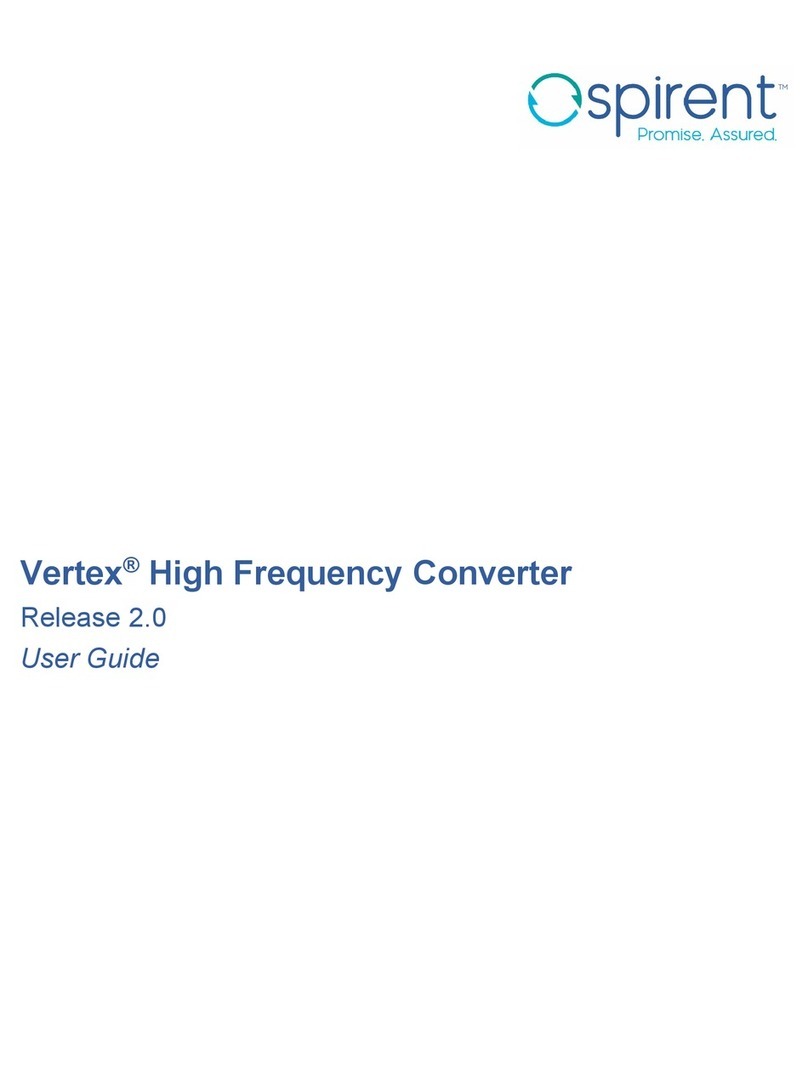
Spirent
Spirent Vertex user guide
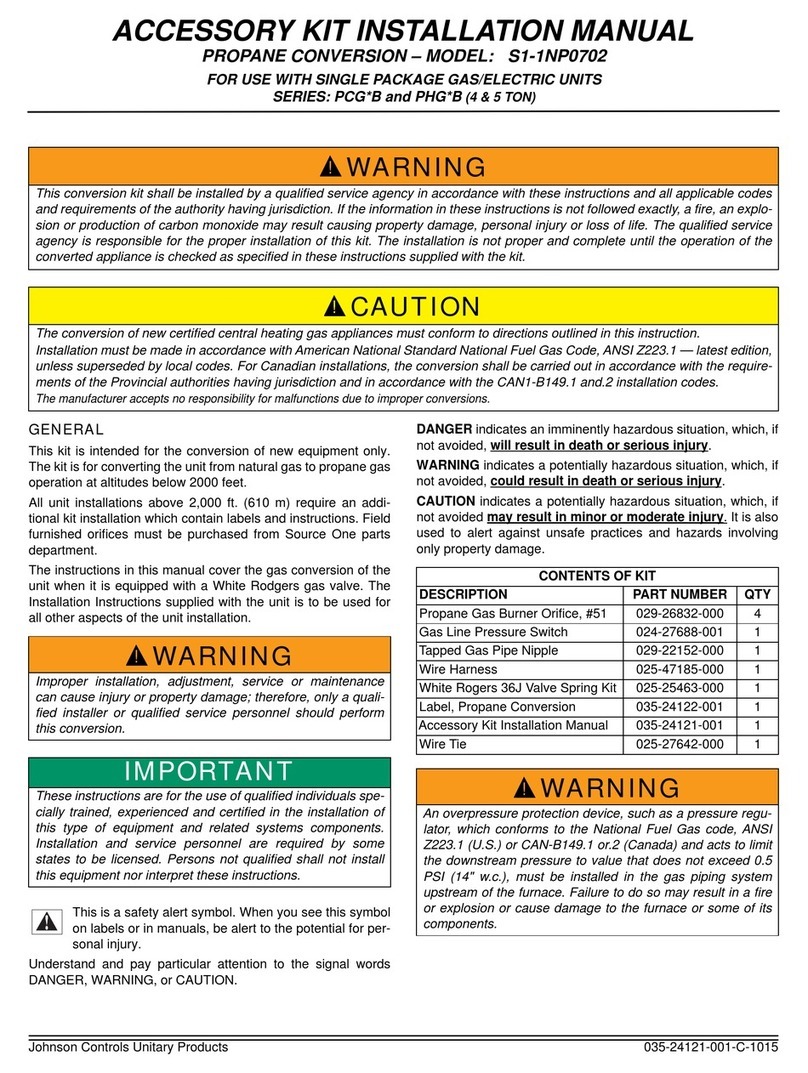
Johnson Controls Unitary Products
Johnson Controls Unitary Products S1-1NP0702 Accessory Kit Installation Manual
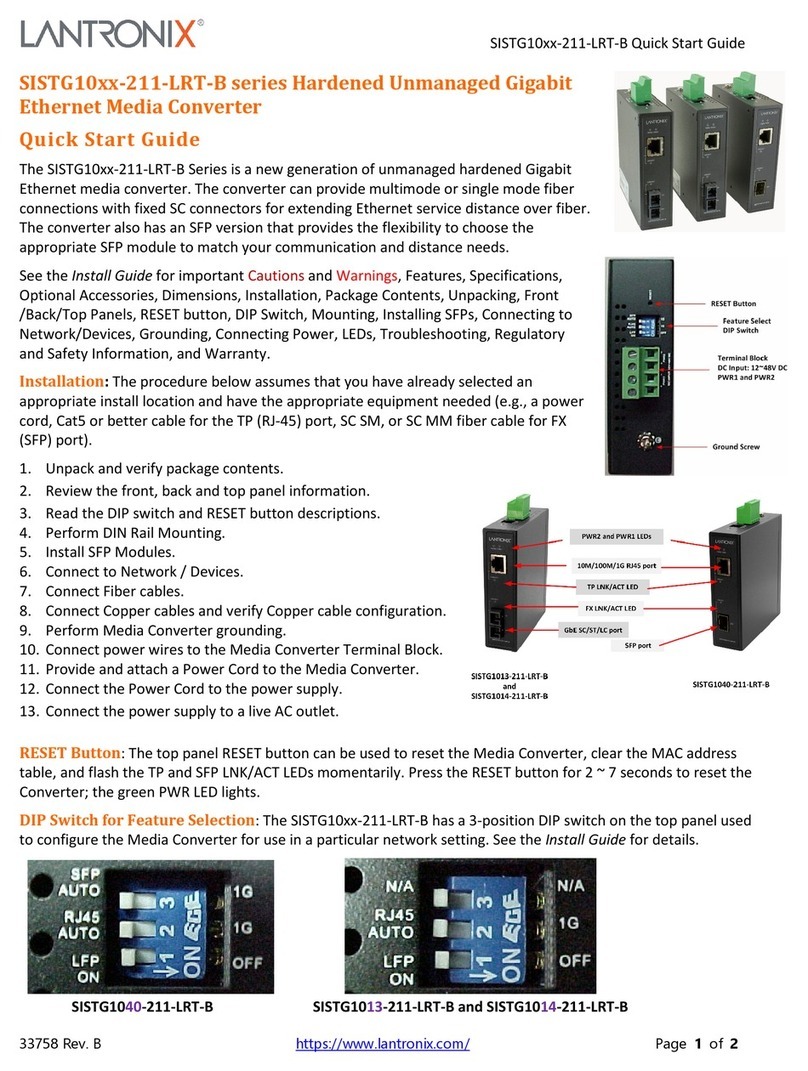
Lantronix
Lantronix SISTG10xx-211-LRT-B Series quick start guide
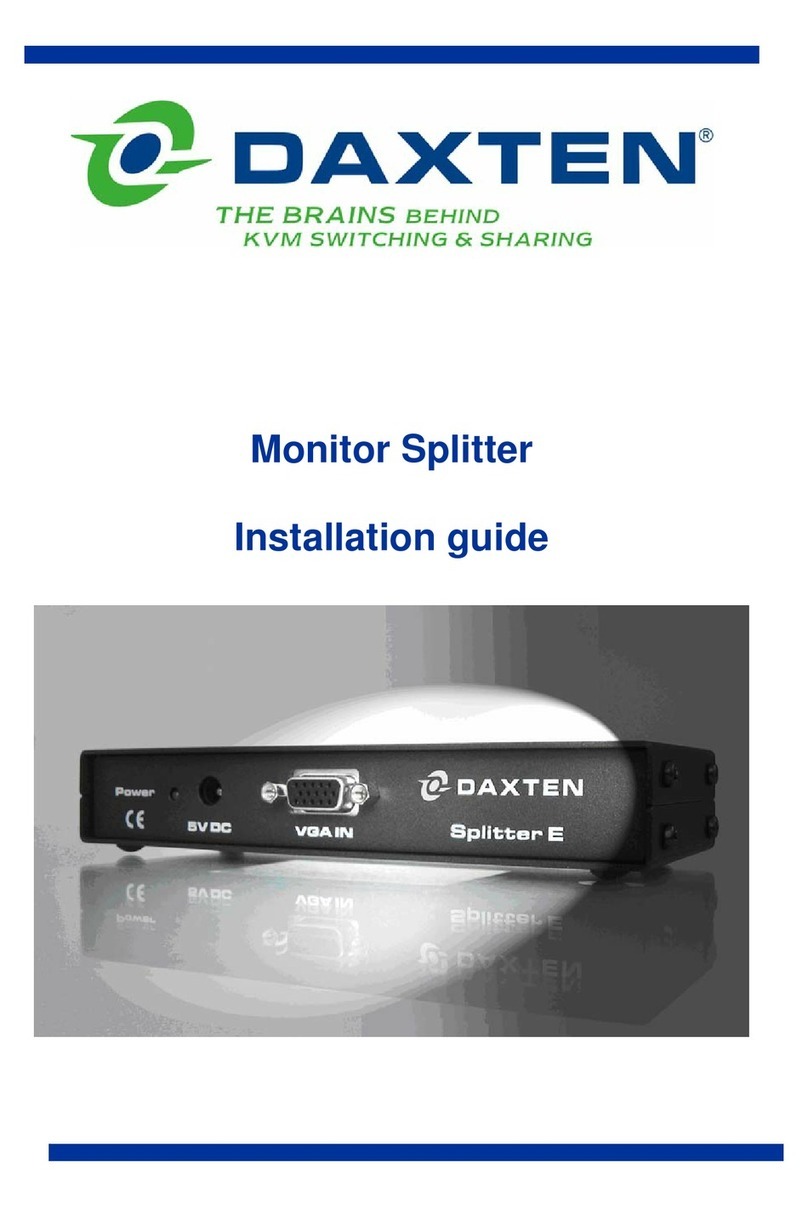
Daxten
Daxten MONITOR SPLITTER installation guide
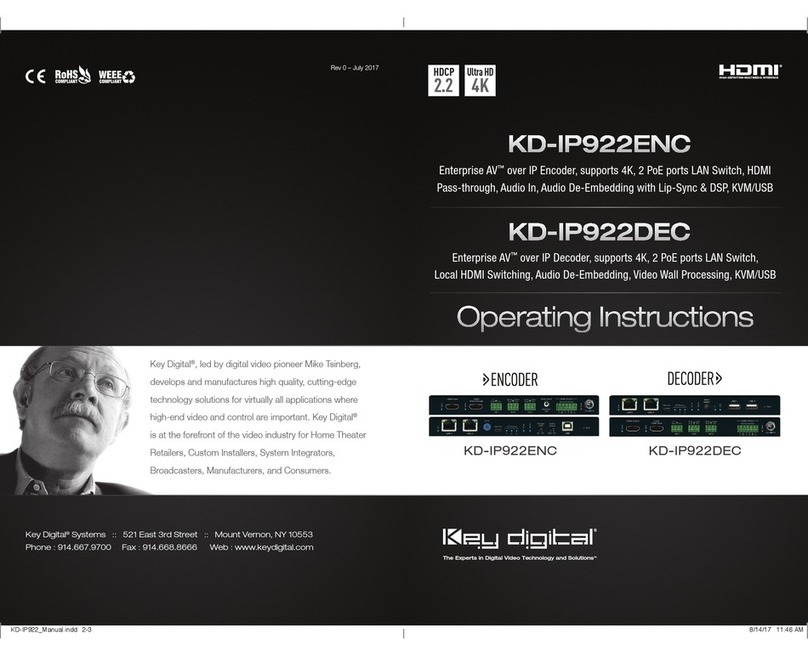
Key Digital
Key Digital KD-IP922ENC operating instructions
